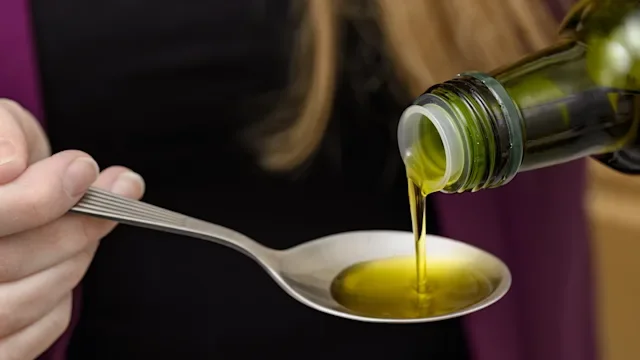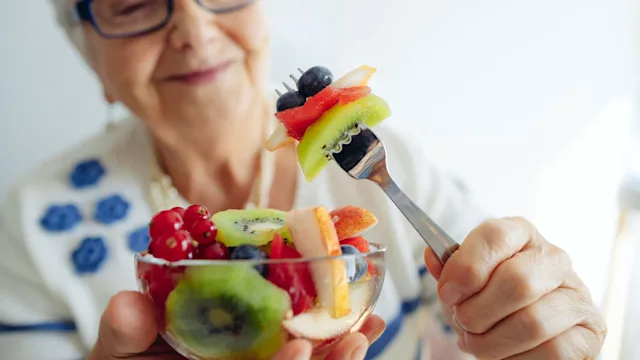Key takeaways:
Shrimp is the most popular seafood in the U.S. It’s high in protein, vitamins, and minerals. Although shrimp contains some dietary cholesterol, it likely doesn’t raise blood cholesterol levels for most people.
Quick to cook, shrimp can be baked, broiled, or grilled. They’re great atop salad, in stir-fries, or served with pasta or rice.
Both wild-caught and farmed shrimp are available in the U.S., and there are advantages and disadvantages to each. Some farmed shrimp may contain traces of antibiotics. And wild-caught shrimp have environmental impacts, since other species may be caught up in shrimp nets.
Shrimp is the most popular seafood consumed in the U.S., and for good reason — it’s delicious and nutritious. Filled with protein, vitamins, and minerals, shrimp is versatile and quick to prepare.
Before you dive into that stir-fry or scampi, you may have some questions about shrimp. You may wonder about the high cholesterol content or be curious about the benefits of farmed versus wild-caught shrimp. Let’s examine the facts about shrimp.
Is shrimp good for you?
Yes, shrimp can be a very nutritious part of a balanced diet. It’s relatively low in calories but high in protein, vitamins, and minerals. Shrimp provides many nutrients but without high amounts of calories, saturated fat, or salt.
Shrimp is often recommended within the seafood category because it’s lower in mercury than other fish and seafood, such as swordfish, shark, and tilefish.
What about cholesterol?
One serving of shrimp (3 oz, or just under ½ cup) contains 161 mg of cholesterol, which is about the same amount of cholesterol in one egg.
Back in the 1990s and early 2000s, experts warned that eating foods containing cholesterol could raise your blood cholesterol levels and increase heart disease risk. It turns out that this advice was mostly incorrect.
Experts soon learned that a high intake of saturated fat — not a high intake of dietary cholesterol — contributes to high blood cholesterol levels. Research failed to show a connection between dietary cholesterol and heart disease risk. Eggs and shrimp were back in favor, and back onto our plates.
In fact, the 2015 to 2020 Dietary Guidelines for Americans removed the advice to restrict dietary cholesterol to 300 mg/day. There just wasn’t enough evidence to support it.
A serving of shrimp has 0.2 g fat, which is a trace amount. Since shrimp doesn’t contain saturated fat, it won’t affect blood cholesterol levels.
Foods that help with heart health: No single food can prevent or treat heart disease. But science suggests that these foods may benefit heart health.
Fish oil supplements versus eating fish: Wondering which has more health benefits? For most people, whole foods are generally better than supplements. Here’s why.
Are sardines good for you? Sardines are dense with nutrients, and can help support the health of your heart, bones, and immune system. Plus, they’re versatile and affordable.
Note: About 15% to 25% of people are hyper-responders to dietary cholesterol. This means eating cholesterol-rich foods may affect their blood cholesterol levels more than it would affect other people. Whether this impacts heart disease risk isn’t clear. It’s best to check with your healthcare professional to see if shrimp is a nutritious choice for you.
What are the health benefits of shrimp?
Here are some of shrimp’s standout nutrients:
Protein: Shrimp is an excellent source of protein, a vital macronutrient that’s needed for building enzymes, hormones, and vitamins in the body. Protein is also necessary for maintaining muscles and bones, and supporting a healthy immune system.
Selenium: Shrimp contains the mineral selenium, which plays an essential role in making thyroid hormone and DNA. As an antioxidant, selenium also helps protect the body against harmful oxidation.
Astaxanthin: Shrimp contains the antioxidant astaxanthin, which has anti-inflammatory benefits and may help protect against neurological diseases such as Alzheimer’s disease.
Iodine: Shrimp provides iodine, a mineral that helps make thyroid hormones. These hormones control metabolism, growth, and several other functions in your body.
Read more like this
Explore these related articles, suggested for readers like you.
Shrimp nutritional facts
Shrimp is very high in protein, but low in carbs and fat. That’s different from most meat, poultry, and fish, which contain more fat (and sometimes saturated fat).
Below is some more nutritional information for shrimp.
Nutrient | Shrimp (3 oz or 85 g) |
Calories | 84 kcal |
Protein | 20 g |
Fat | 0.2 g |
Carbohydrates | 0.2 g |
Sodium | 94 mg |
Cholesterol | 161 mg |
Shrimp also contains the following vitamins and minerals:
Vitamins include:
Vitamin B12
Choline
Niacin (vitamin B3)
Folate
Minerals include:
Phosphorus
Calcium
Iron
Magnesium
Potassium
Zinc
Selenium
Iodine
Healthiest ways to prepare shrimp
One of the advantages of shrimp is that it can be cooked in mere minutes. To keep the nutrition profile of a high protein and low-fat dish, the best cooking methods for shrimp are:
Baking
Boiling
Steaming
Grilling
Barbecuing
Broiling
Sautéing or stir-frying shrimp in a drizzle of olive oil adds some fat, but that’s fine since fat is a necessary part of your diet. Breaded and deep-fried shrimp have even more fat, and may contain saturated fat, so they aren’t the most nutritious options.
Shrimp is so versatile. Here are a few ways you can eat it:
Rolled into sushi
Stir-fried with rice
Added to pasta
On salads
Grilled on skewers
Who should not eat shrimp?
You should avoid shrimp if you have a known shrimp allergy. Shrimp is one of the major food allergies in the U.S., with shellfish allergy affecting about 2% of people in the U.S. Plus, some brands of frozen shrimp contain preservatives like sodium bisulfite, which you should avoid if you have a sulfite allergy.
Some healthcare professionals recommend that people with a history of gout (an inflammatory condition where uric acid crystals form on joints) limit their intake of shrimp and other animal-based proteins. This is because all meat, poultry, and seafood (not just shrimp) contain purines, a compound involved in making the uric acid that causes gout pain.
But changes in diet may not have a dramatic effect on your gout symptoms, and shrimp has moderate — not high — levels of purines. So if you have gout, you may not have to avoid shrimp entirely. Ask your healthcare professional what’s best for you.
Can you eat too much shrimp?
It’s possible to eat too much of any food, so yes, you can eat too much shrimp. The Dietary Guidelines recommend eating about 8 oz of fish/seafood per week, which is the equivalent of about 2 or 3 palm-sized servings. And shrimp can be an excellent part of that.
Should I be concerned about antibiotics in shrimp?
There may be cause for concern. About 90% of shrimp that’s sold in the U.S. is imported. Most of this shrimp is farm-raised rather than wild-caught. When shrimp is raised in water tanks on farms, antibiotics are sometimes given to them to help reduce and treat infections.
The problem? People who eat farm-raised shrimp may ingest these antibiotics. There’s a possibility that over time, this can result in the development of antibiotic-resistant bacteria or “superbugs,” which are strains of bacteria that resist treatment from antibiotics.
According to the FDA, no shrimp containing antibiotics may be sold in the U.S. But these drugs are still used in other countries and can sometimes be found on imported shrimp. The FDA monitors shrimp imports and refuses to allow shrimp imports that contain banned antibiotics, but some shrimp treated with these antibiotics slip through the cracks.
Shrimp farms in these countries range from clean, safe, well-run facilities to risky operations with illegal practices (such as using banned antibiotics and paying unfair wages to workers). You can do some research to choose shrimp that you feel good about eating. Check the Monterey Bay Aquarium’s Seafood Watch website for up-to-date information about shrimp.
Wild-caught shrimp isn’t treated with antibiotics. In the U.S., you may be able to find wild-caught shrimp from the Gulf of Mexico or from Alaska. They’ll cost more, since they’re rare and account for less than 10% of U.S. shrimp supply.
But wild-caught shrimp also have a downside: The fishing nets used to collect them may accidentally scoop up other species. This is called bycatch and can happen anytime a smaller species (like shrimp or tuna) are collected using nets.
Sadly, up to 90% of what gets caught (and, in many cases, killed) in the shrimp net is other marine life, such as fish and turtles. Many environmentalists choose to avoid shrimp for this reason.
The bottom line
Add shrimp to your weekly meal rotation as a high-protein option. Shrimp contains vitamins, minerals, and antioxidants. Plus, shrimp are versatile to use and very quick to cook.
If you’re concerned about antibiotic residue, opt for wild-caught shrimp instead of farmed shrimp. And if you’re concerned about the environmental impact of shrimp, you can choose more sustainable fish and seafood varieties to get your weekly 8 oz.

Why trust our experts?



References
AskUSDA. (2024). Why is it important to eat seafood and how often should I eat it? U.S. Department of Agriculture.
Clark, M. (2019). What are we supposed to think about shrimp? The New York Times.
DiMarco, D. M., et al. (2019). Differences in response to egg-derived dietary cholesterol result in distinct lipoprotein profiles while plasma concentrations of carotenoids and choline are not affected in a young healthy population. Journal of Agriculture and Food Research.
Feingold, K. R., et al. (2024). The effect of diet on cardiovascular disease and lipid and lipoprotein levels. Endotext.
FoodData Central. (2019). Crustaceans, shrimp, cooked. U.S. Department of Agriculture.
Food Allergy Research & Education. (n.d.). Shellfish allergy.
Guy, A. (2017). 5 facts that will make you think twice about eating imported, farm-raised shrimp. Oceana.
Health Canada. (2023). Crustaceans, shrimp, mixed species, raw.
Mutter, R. (2020). Here are America’s most-consumed seafood species. Intrafish.
Office of Dietary Supplements. (2024). Iodine: Fact sheet for health professionals. National Institutes for Health.
Office of Dietary Supplements. (2024). Selenium: Fact sheet for health professionals. National Institutes for Health.
Sharma, L., et al. (2021). Antibiotic-resistant bacteria and gut microbiome communities associated with wild-caught shrimp from the United States versus imported farm-raised retail shrimp. Scientific Reports.
Si, P., et al. (2022). Biological and neurological activities of astaxanthin (review). Molecular Medicine Reports.
Soliman, G. A. (2018). Dietary cholesterol and the lack of evidence in cardiovascular disease. Nutrients.
U.S. Department of Agriculture. (n.d.). Protein foods.
U.S. Department of Agriculture. (2020). Dietary guidelines for Americans, 2020-2025: 9th edition.
U.S. Department of Health and Human Services, et al. (2015). 2015 – 2020 dietary guidelines for Americans: 8th edition.
U.S. Food and Drug Administration. (2023). Food allergies: What you need to know.
Vance, E. (2024). Is shrimp good for you? It’s complicated. The New York Times.
Yaqoob, Z., et al. (2022). Mechanistic role of astaxanthin derived from shrimp against certain metabolic disorders. Food Science & Nutrition.
Zhang, Y. (2022). Gout and diet: A comprehensive review of mechanisms and management. Nutrients.


















